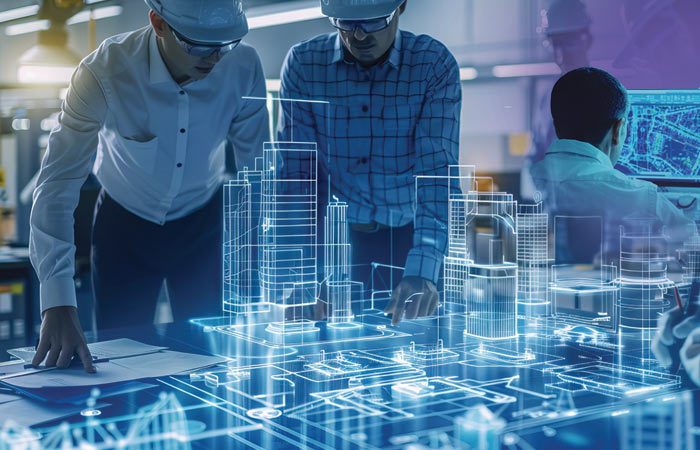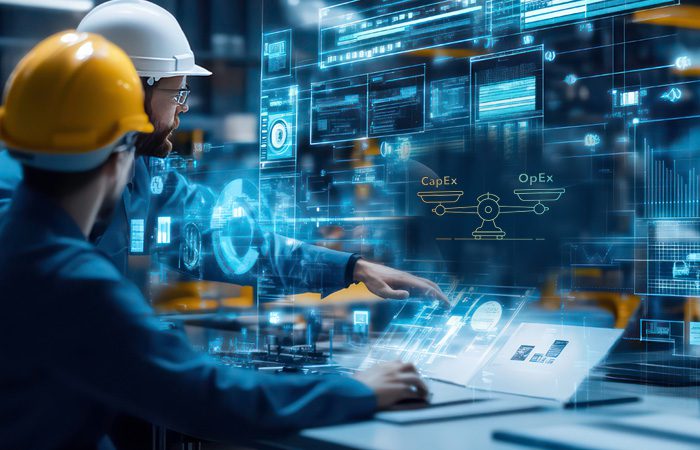
8 Latest Trends in Energy Modeling in Construction
Energy modeling in construction has undergone significant transformations over the past few years, driven by advancements in technology, increasing environmental regulations, and a growing emphasis on sustainability. As the construction industry continues to evolve, several key trends have emerged, reshaping how energy modeling is approached and applied.
Check out the latest trends in energy modeling that are setting the stage for a more efficient, sustainable, and innovative future in construction.
- Integration of Building Information Modeling (BIM) with Energy Modeling
Building Information Modeling (BIM) has revolutionized the construction industry by providing a detailed digital representation of a building’s physical and functional characteristics. The integration of BIM with energy modeling tools has become increasingly prevalent, allowing for more accurate and efficient simulations of a building’s energy performance.
By incorporating BIM data, energy modelers can easily access and manipulate detailed building information, such as geometry, materials, and systems, leading to more precise energy analysis. This integration facilitates better decision-making during the design phase, enabling architects and engineers to optimize energy efficiency from the outset.
- Advanced Simulation Techniques
The adoption of advanced simulation techniques is another significant trend in energy modeling. Traditional static modeling methods are being supplemented and, in some cases, replaced by dynamic simulations that can analyze building performance over time.
These techniques consider various factors, such as weather patterns, occupant behavior, and system interactions, providing a more comprehensive understanding of a building’s energy consumption.
One such technique is Computational Fluid Dynamics (CFD), Day light analysis, which allows for the detailed analysis of airflow, lighting, and heat transfer within buildings. CFD simulations help identify potential issues related to ventilation, heating, and cooling, leading to more effective HVAC system designs and improved indoor air quality.
- Machine Learning and Artificial Intelligence (AI)
Machine learning and artificial intelligence are making significant inroads into energy modeling. These technologies can analyze vast amounts of data to identify patterns and predict future energy consumption with high accuracy. AI-driven models can learn from past projects, continuously improving their predictive capabilities.
Machine learning algorithms can also optimize building systems in real-time, adjusting settings to enhance energy efficiency based on current conditions. For example, smart thermostats and lighting systems can use AI to learn occupants’ preferences and schedules, automatically adjusting to reduce energy usage without compromising comfort.
- Energy Modeling for Retrofits
As the focus on sustainability grows, retrofitting existing buildings to improve energy efficiency has become a priority. Energy modeling plays a crucial role in this process by assessing the current performance of a building and identifying areas for improvement. By simulating various retrofit scenarios, energy modelers can determine the most cost-effective measures to enhance energy efficiency.
Advanced energy modeling tools can simulate the impact of different retrofit options, such as upgrading insulation, installing high-efficiency windows, or replacing outdated HVAC systems. This approach ensures that retrofit projects deliver maximum energy savings and return on investment.
- Decarbonization and Zero-Energy Buildings
The push towards decarbonization and the construction of zero-energy buildings (ZEBs) is a major trend in the industry. Energy modeling is essential for designing and optimizing buildings that generate as much energy as they consume. This involves detailed simulations to balance energy demand with on-site renewable energy generation, such as solar panels, Day lighting or wind turbines.
Energy models for ZEBs consider a wide range of factors, including building orientation, shading, insulation, and renewable energy system sizing. By simulating unique design options, modelers can identify the most effective strategies for achieving zero-energy performance.
- Occupant-Centric Modeling
Traditional energy modeling often focuses on the building itself, but there is a growing recognition of the importance of occupant behavior in energy consumption. Occupant-centric modeling considers how people interact with the building, including their schedules, preferences, and activities. This approach leads to more accurate predictions of energy usage and better-informed design decisions.
Advanced energy modeling tools can simulate various occupancy scenarios, allowing designers to optimize building systems for different usage patterns. This trend highlights the need for a human-centric approach to energy efficiency, ensuring that buildings are not only energy-efficient but also comfortable and functional for their occupants.
- Sustainability and Lifecycle Analysis
Energy modeling is increasingly being integrated with sustainability and lifecycle analysis to provide a holistic view of a building’s environmental impact. This approach considers the entire lifecycle of a building, from construction to demolition, evaluating factors such as embodied energy, carbon footprint, and resource consumption.
By combining energy modeling with lifecycle analysis, project teams can make more informed decisions that balance energy efficiency with other sustainability goals. This trend reflects a broader shift towards sustainable construction practices that prioritize long-term environmental and economic benefits.
- Integration with Smart Building Technologies
The proliferation of smart building technologies is influencing energy modeling practices. Smart sensors, IoT devices, and building management systems generate vast amounts of data that can be used to enhance energy models. Real-time data from smart buildings provides valuable insights into actual energy performance, allowing for continuous optimization and adjustment of building systems.
Energy modeling tools that integrate with smart building technologies can offer predictive maintenance, real-time energy management, and adaptive control strategies. This integration enhances the overall efficiency and performance of buildings, contributing to more sustainable and resilient built environments.
The latest trends in energy modeling in construction reflect a dynamic and rapidly evolving field. Advancements in technology, increasing regulatory demands, and a growing emphasis on sustainability are driving innovation in energy modeling practices. By leveraging BIM integration, advanced simulation techniques, AI, cloud-based platforms, and smart technologies, the construction industry is poised to achieve higher levels of energy efficiency and sustainability.
As these trends continue to develop, energy modeling will play an increasingly crucial role in shaping the future of construction, ensuring that buildings are not only energy-efficient but also resilient, comfortable, and environmentally responsible.

